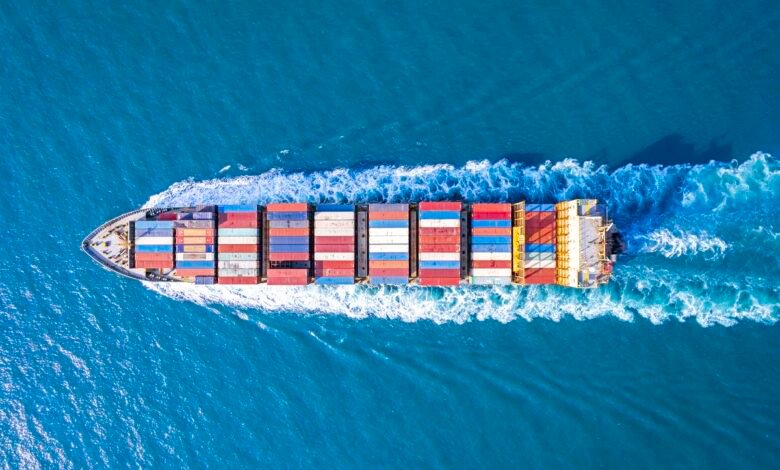How to invest in the shipping industry

If you spent too much time reading the headlines, you would think that London has become a global backwater with no interesting companies on its exchanges. Not so. There are many leaders in their respective industries listed here, and most are currently on sale. The world’s foremost shipbroker, Clarksons (LSE: CKN), is a prime example. Shipbroking is a huge industry but often overlooked.
Shipping and world trade: a gigantic industry
Approximately 11 billion tonnes of goods are shipped around the world annually. That figure excludes oil, gas, grain and other commodities. Overall, shipping accounts for 80% of world trade, as it remains the most cost-effective and easiest way of moving goods and commodities. No one really knows exactly how big the industry is. There is no overall regulator or database on industry operators and ships, and it is possible to operate without any real oversight. Still, two things are clear. The sector is massive, and getting bigger.
Since 2007, according to the UK government, the size of the world’s trading fleet has doubled. Based on the current order books for new vessels, growth will continue, particularly in the liquefied natural gas (LNG) tanker market. According to Clarksons, the current order book is equal to 50% of the existing global fleet, while Maritime Strategies International’s 2023 outlook estimates that shipyard capacity will hit 81 million gross tonnes in 2030, up from 67.1 million today. The new space will be needed: shipyards are fully booked out until 2028, on average.
Sign up to Money Morning
Don’t miss the latest investment and personal finances news, market analysis, plus money-saving tips with our free twice-daily newsletter
Don’t miss the latest investment and personal finances news, market analysis, plus money-saving tips with our free twice-daily newsletter
So, where does shipbroker Clarksons fit into all of this? The company plays a pivotal role in the industry, acting as a matchmaker between ship owners and cargo owners, facilitating vessel transactions and mitigating risk with the use of derivatives. The industry truly relies on a middle party such as Clarksons to function effectively.
Shipping is an incredibly diverse industry with numerous players, both large and small, and many more entities that operate outside the industry but require its services. This complexity doesn’t easily lend itself to digitisation. There is a critical need for an intermediary that is trusted by all parties, with the right connections to execute the job in the most efficient manner.
Clarksons is the undisputed market leader in the shipbroking industry, a position that is difficult for competitors to challenge. In a broking or intermediary business without a centralised market (such as shipping), scale brings tangible benefits, as it maximises Clarksons’ ability to match counterparties. Furthermore, as a public company, Clarksons operates with a highly visible brand and a clear regulatory structure, enhancing its financial stability and transparency.
The group has also built up an advantage when it comes to data. When shipowners and charterers face market conditions and geopolitical events they have not experienced before, they inevitably seek expert insights from a highly reputable third party. As a rule, it isn’t easy to make money in the shipping industry. It requires a lot of capital to get started, and charter rates can be volatile, so returns on large investments are unpredictable. Moreover, the industry is highly cyclical. In a downturn, you might have to foot the bill of keeping ships in port empty, not to mention repair and maintenance costs, which rise with the age of the vessel.
Clarksons doesn’t have to worry about any of these problems. It takes a cut out of every deal, and its only real overheads are staffing costs. It has an asset-light business model (it doesn’t need to buy vessels) and can quickly reduce headcount in a downturn.
While the company cannot escape the cyclicality of the industry in general, Clarksons’ brokers operate across subsectors. Each shipping segment has its own demand and supply dynamics and, hence, its own cycle. That gives the company a level of protection against cyclicality. Over the past two decades, revenue has only been loosely correlated to shipping rates. For example, between 2022 and 2023, global charter rates fell by around a third. Yet Clarksons’ overall sales rose.
How to profit off the shipping industry
While there have been some bumps along the way, the company has gone from strength to strength over the past two decades as it has piggybacked on the growth of the industry. Since 2004, Clarksons has delivered a compound annual growth rate of 12.7% for revenue, 11.2% for overall operating profit, 8.4% for underlying earnings per share and 9.2% for the dividend per share.
With the industry projected to experience continued growth over the next decade (a forecast I can confidently make considering the current fleet order book), Clarksons appears well-positioned for future expansion. According to brokers at Liberum, the stock is currently trading at an undemanding price/earnings (p/e) ratio of 14.7 for 2024, with a projected dividend yield of 2.6%, rising to 2.9% by 2026.
These figures don’t even factor in the cash on Clarksons’ balance sheet. The company has consistently maintained a robust balance sheet with net cash, partly as a defence against market downturns, but primarily to reassure its customers. A cash-rich, audited balance sheet is a significant competitive advantage in an otherwise opaque industry. Remove the £400m or so of net cash on the company’s balance sheet reported at the end of 2023, and the cash-adjusted forward p/e drops to around 10. That’s a compelling valuation for a global market leader.
This article was first published in MoneyWeek’s magazine. Enjoy exclusive early access to news, opinion and analysis from our team of financial experts with a MoneyWeek subscription.





